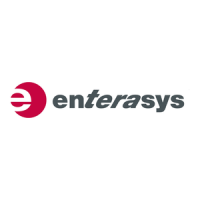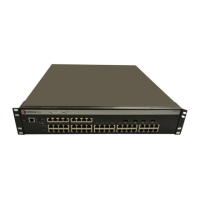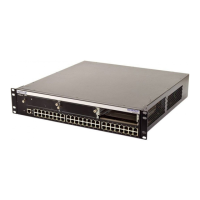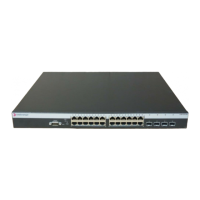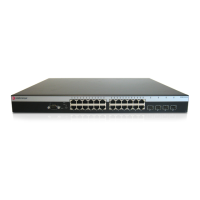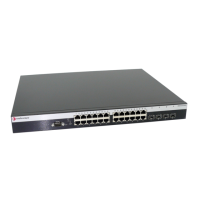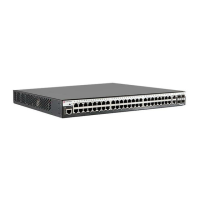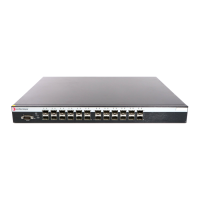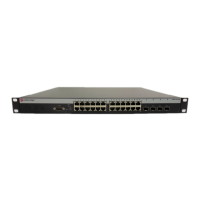VLAN Configuration
3-153
3
Figure 3-92. VLAN Static Membership
CLI – This example adds Port 3 to VLAN 1 as a tagged port, and removes Port 3
from VLAN 2.
Configuring VLAN Behavior for Interfaces
You can configure VLAN behavior for specific interfaces, including the default VLAN
identifier (PVID), accepted frame types, ingress filtering, GVRP status, and GARP
timers.
Command Usage
• GVRP – GARP VLAN Registration Protocol defines a way for switches to
exchange VLAN information in order to automatically register VLAN members on
interfaces across the network.
• GARP – Group Address Registration Protocol is used by GVRP to register or
deregister client attributes for client services within a bridged LAN. The default
values for the GARP timers are independent of the media access method or data
rate. These values should not be changed unless you are experiencing difficulties
with GVRP registration/deregistration.
Command Attributes
• PVID –
VLAN ID assigned to untagged frames received on the interface. (Default: 1)
- If an interface is not a member of VLAN 1 and you assign its PVID to this VLAN,
the interface will automatically be added to VLAN 1 as an untagged member.
For all other VLANs, an interface must first be configured as an untagged
member before you can assign its PVID to that group.
• Acceptable Frame Type – Sets the interface to accept all frame types, including
tagged or untagged frames, or only tagged frames. When set to receive all frame
types, any received frames that are untagged are assigned to the default VLAN.
(Option: All, Tagged; Default: All)
Console(config)#interface ethernet 1/3
Console(config-if)#switchport allowed vlan add 1 tagged 4-204
Console(config-if)#switchport allowed vlan remove 2
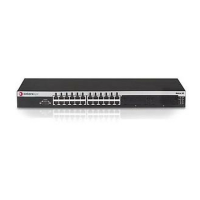
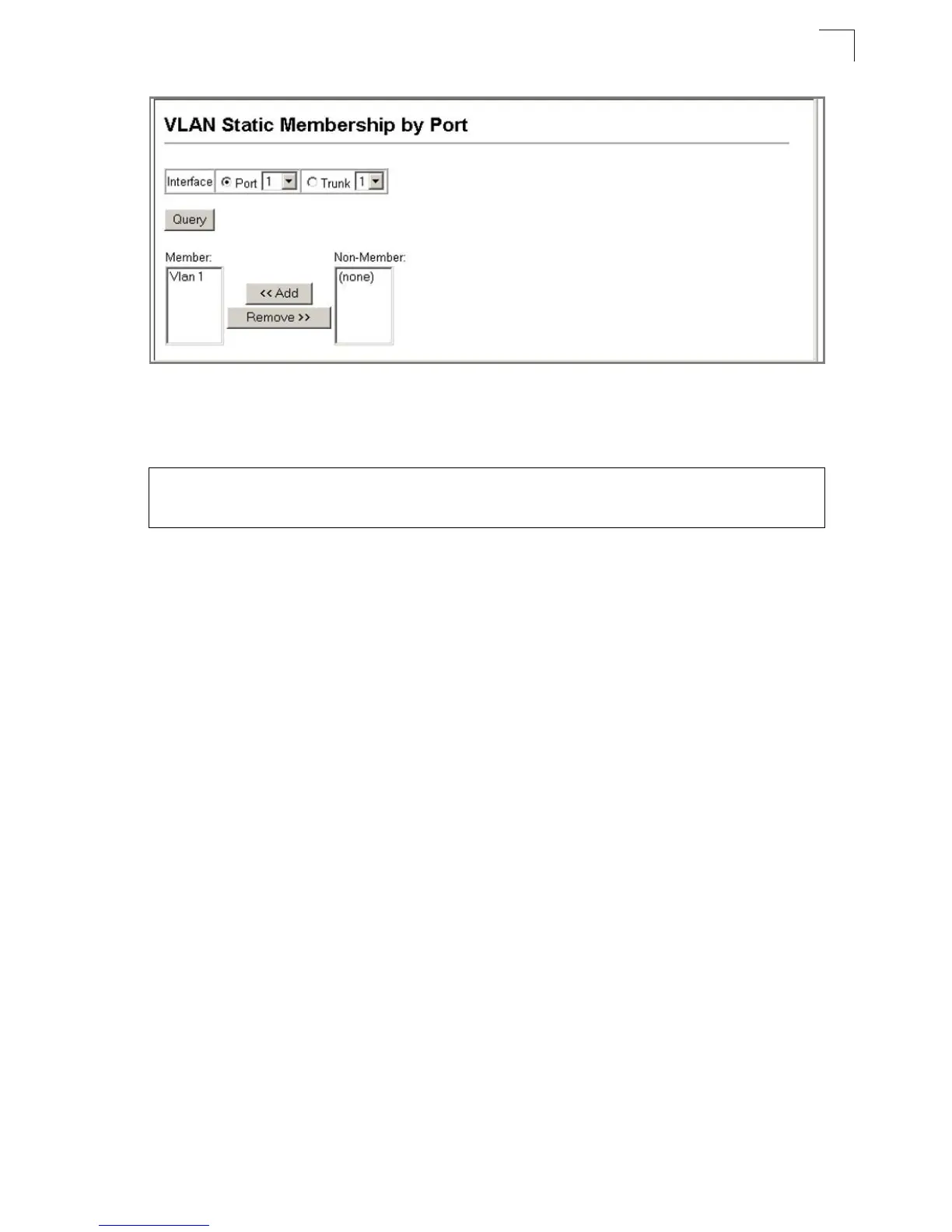